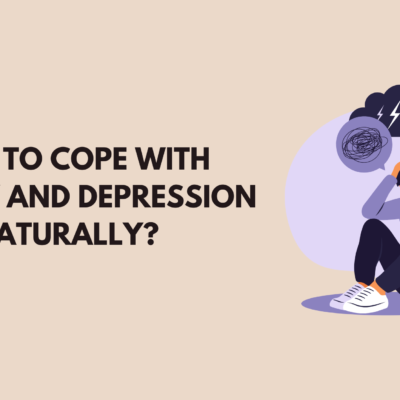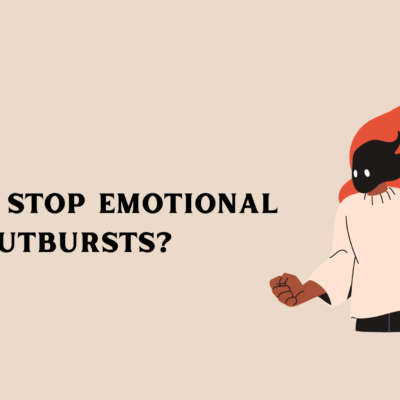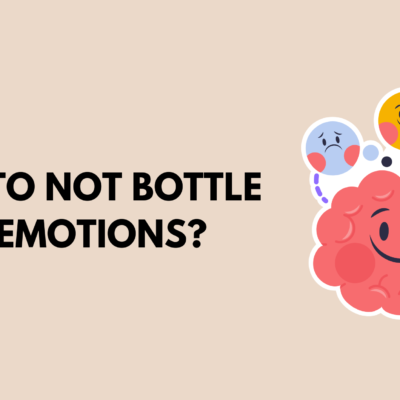How to Manage Your Own Emotions: We all experience a whirlwind of emotions—joy, anger, sadness, fear, excitement, frustration, love, envy, and everything in between. Emotions are deeply human and color every aspect of our lives, from our relationships to our work to our sense of self. But while emotions are natural, the way we respond to them can either empower us or pull us down.
Emotional self-regulation—the ability to manage and respond to emotional experiences in a healthy way—is a skill that can be learned, practiced, and refined over time. In this article, we’ll explore what emotional self-regulation is, why it matters, and most importantly, how you can start managing your own emotions more effectively today.
Also Read:
Why Emotional Management Matters
Before we dive into the “how,” let’s take a moment to understand the “why.”
- Improves relationships: When you manage your emotions well, you’re less likely to lash out, shut down, or overreact, helping you maintain healthier connections.
- Enhances decision-making: Strong emotions can cloud judgment. Staying calm allows for rational thinking.
- Reduces stress: Emotional regulation prevents small issues from becoming overwhelming.
- Promotes mental well-being: Chronic emotional dysregulation is linked to anxiety, depression, and burnout.
- Boosts self-confidence: Being in control of your inner world makes you feel stronger and more grounded.
Step 1: Understand Your Emotional Landscape
The first step in managing emotions is understanding them. Many of us have been conditioned to ignore or suppress our feelings—especially the uncomfortable ones—but awareness is key.
1.1 Name the Emotion
Ask yourself:
- What exactly am I feeling?
- Is it sadness, disappointment, embarrassment, guilt, shame, fear, jealousy?
Labeling your emotion accurately helps in reducing its intensity. Neuroscience shows that putting feelings into words activates the prefrontal cortex, calming the emotional center of the brain.
1.2 Identify the Trigger
Where did the emotion come from?
- Did someone say something that hurt you?
- Did you recall a painful memory?
- Are you reacting to a perceived threat?
Understanding the source helps you respond appropriately rather than impulsively.
Step 2: Pause Before Reacting
Emotions are not instructions—they’re signals. Just because you feel like yelling or withdrawing doesn’t mean you have to.
2.1 Practice the 10-Second Rule
When you’re emotionally charged, count to 10 before responding. This short pause can interrupt impulsive behavior and give you a chance to choose a better reaction.
2.2 Breathe
Deep breathing signals your nervous system to calm down. Try:
- Inhale for 4 seconds
- Hold for 4 seconds
- Exhale for 6 seconds
Repeat 3-5 times. You’ll feel more centered and in control.
Step 3: Challenge Negative Thoughts
Our thoughts heavily influence our emotions. Often, it’s not the situation but our interpretation of it that makes us upset.
3.1 Identify Cognitive Distortions
Do you notice any of these patterns?
- Catastrophizing: “This is the worst thing ever!”
- Black-and-white thinking: “If I’m not perfect, I’m a failure.”
- Mind-reading: “They must think I’m useless.”
Challenging these thoughts helps you reframe your emotions.
3.2 Ask Yourself:
- What evidence supports this thought?
- Is there another way to look at this situation?
- What would I tell a friend who felt this way?
This helps you detach from irrational or harmful beliefs and move toward clarity.
Step 4: Express Emotions in Healthy Ways
Suppressing emotions isn’t healthy—but neither is expressing them destructively. Here’s how to release emotions constructively:
4.1 Journaling
Write down how you feel and why. The act of writing organizes your thoughts and helps you process emotions.
4.2 Talk to Someone You Trust
Sharing your feelings with a supportive friend, partner, or therapist can offer new insights and lighten your emotional load.
4.3 Use Creative Outlets
Art, music, dancing, painting, or even cooking can be excellent ways to express and release emotions creatively.
Step 5: Develop Healthy Coping Mechanisms
When emotions run high, it’s tempting to resort to quick fixes—junk food, alcohol, overworking, or scrolling endlessly through social media. These may numb the feeling temporarily but don’t resolve it.
Instead, build a toolbox of healthy coping strategies:
- Exercise: Moves stress and tension out of the body
- Nature: Calms the mind and improves mood
- Meditation: Trains you to observe emotions without judgment
- Hobbies: Shift your focus and create a sense of joy and accomplishment
- Self-soothing: Take a warm bath, listen to calming music, light a candle
Step 6: Build Emotional Resilience
You can’t control everything that happens to you—but you can strengthen how you respond.
6.1 Practice Gratitude
Focusing on what’s going well, even in tough times, rewires the brain for positivity.
Try writing down 3 things you’re grateful for every night.
6.2 Set Healthy Boundaries
If certain people or environments trigger emotional distress, protect your space. It’s okay to say no or walk away.
6.3 Accept What You Can’t Control
Sometimes, emotions come from resisting reality. Accepting what is (rather than what you wish was) can bring peace.
Step 7: Know When to Seek Help
Managing emotions doesn’t mean doing it all alone. If you:
- Constantly feel overwhelmed
- Have trouble controlling anger, sadness, or anxiety
- Notice it’s affecting your relationships or work
…it might be time to talk to a therapist or counselor. Professional help can give you tools and support tailored to your unique situation.
Bonus Tips: Everyday Practices for Emotional Balance
1. Start the Day Mindfully
Take 5 minutes in the morning to check in with yourself—how do you feel? What’s your intention for the day?
2. Limit Overstimulation
Too much news, screen time, or social media can heighten emotional stress. Set boundaries for media consumption.
3. Practice Self-Compassion
Talk to yourself like you would to someone you love. If you’re feeling low, say:
“It’s okay to feel this way. I’m doing the best I can. This feeling will pass.”
4. Keep a Mood Journal
Tracking your mood patterns helps you understand what affects you emotionally and how to prepare for it.
Conclusion: You’re Not Your Emotions
Emotions are powerful messengers, but they don’t define you. They come and go, like waves—but you are the ocean.
Learning to manage your emotions doesn’t mean avoiding them. It means welcoming them with awareness, understanding their message, and choosing your response with intention.
It takes time, patience, and self-love—but it’s worth it.
Because when you master your emotions, you master your life.






